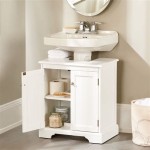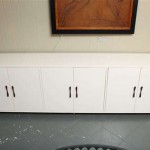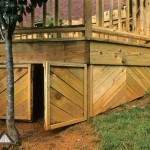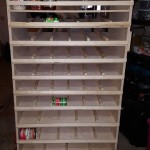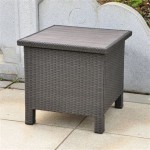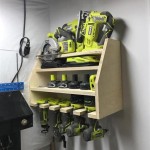Maximizing Storage Space With a Three-Drawer File Cabinet
The three-drawer file cabinet is a staple in many offices and homes, offering a seemingly simple solution for document organization. However, its potential for efficient storage often goes untapped. A strategic approach to utilizing this seemingly modest piece of furniture can significantly expand its storage capacity, transforming it from a cluttered repository into an organized and accessible system.
Effectively maximizing the storage space within a three-drawer file cabinet involves more than just dumping documents inside. It requires a conscious effort to implement organizational strategies, utilize appropriate accessories, and regularly maintain the system. This article will explore various techniques to optimize the use of a three-drawer file cabinet, thereby enhancing overall efficiency and decluttering the workspace.
Optimizing Vertical Space within Drawers
The most common mistake made when using a file cabinet is underutilizing the vertical space within each drawer. Documents are often simply piled on top of each other, creating a disorganized mess and making it difficult to find specific items. To combat this, implementing a robust filing system is crucial. This involves categorizing documents, labeling folders clearly, and using hanging file folders to create a structured environment.
Hanging file folders provide a framework for organizing individual files. They allow documents to be grouped together based on subject matter, client names, project details, or any other relevant criteria. The tabs on the hanging folders should be clearly labeled, enabling quick and easy identification of the contents. The spacing between hanging folders should be sufficient to allow for easy access to the files within.
Within each hanging folder, individual files can be further organized using manila folders. These folders serve to protect the documents and provide an additional layer of organization. Manila folders should also be labeled with specific details about the contents. Using a consistent labeling system throughout the entire file cabinet is essential for maintaining order and ensuring efficient retrieval of information.
Furthermore, consider the thickness of the documents being stored. Bulky files can take up considerable space and make it difficult to close the drawer smoothly. If possible, consider digitizing documents to reduce their physical footprint. If digitization is not feasible, explore methods of consolidating information, such as removing duplicate copies or summarizing lengthy documents.
Another strategy for optimizing vertical space is to use file folder supports or dividers. These accessories help to keep files upright and prevent them from slumping over, which can waste valuable space. File folder supports are particularly useful for drawers that are not completely full, as they prevent files from shifting around and becoming disorganized.
The arrangement of files within each drawer can also impact storage capacity. Experiment with different arrangements to find the most efficient configuration. For example, consider arranging files alphabetically, chronologically, or by subject matter. The specific arrangement will depend on individual needs and preferences, but the goal should always be to maximize space and improve accessibility.
Leveraging Accessories for Enhanced Organization
While a basic three-drawer file cabinet offers a foundational storage solution, accessories can significantly enhance its functionality and organizational capabilities. These accessories can help to maximize space, improve accessibility, and create a more streamlined filing system. Understanding the range of available accessories and how they can be used effectively is essential for optimizing the use of a file cabinet.
One of the most commonly used accessories is the hanging file folder frame. These frames are designed to fit inside the drawers and provide a stable platform for hanging file folders. They help to prevent the folders from collapsing or becoming tangled, ensuring that the files remain organized and accessible. Different frame sizes are available to accommodate various drawer dimensions, so it is important to choose the correct size for the file cabinet.
File folder tabs and inserts are another essential accessory for file cabinet organization. These tabs attach to the top of hanging file folders and manila folders, providing a clear and visible label for the contents. Inserts are used to write the labels, allowing for customization and easy updating as needed. Using color-coded tabs can further enhance organization by visually differentiating between different categories of files.
Drawer dividers are also a valuable accessory for maximizing storage space. These dividers separate the drawer into sections, allowing for the organization of different types of items. For example, one section could be used for hanging files, while another section could be used for storing boxes or other supplies. Drawer dividers can be adjusted to accommodate different sizes of items, providing flexibility and adaptability.
In addition to these standard accessories, there are also specialized accessories designed for specific purposes. For example, some file cabinets have built-in organizers for pens, pencils, and other small office supplies. These organizers help to keep the desktop clutter-free and ensure that essential supplies are always within easy reach. Others may include locking mechanisms for securing sensitive documents.
Furthermore, consider using storage boxes within the file cabinet. These boxes can be used to store items that are not easily filed, such as photographs, CDs, or small electronic devices. Choose boxes that are appropriately sized for the file cabinet drawers and label them clearly to ensure easy identification of the contents.
The strategic use of accessories can transform a basic file cabinet into a highly organized and efficient storage system. By carefully selecting the right accessories and using them effectively, users can maximize space, improve accessibility, and create a more streamlined workflow.
Regular Maintenance and Decluttering
Even with the most sophisticated organizational system in place, a file cabinet can quickly become cluttered and inefficient if it is not regularly maintained. Consistent maintenance and decluttering are essential for ensuring that the file cabinet remains an effective storage solution. This involves periodically reviewing the contents, removing obsolete items, and reorganizing the files as needed.
The first step in maintaining a file cabinet is to establish a regular schedule for reviewing the contents. This schedule should be based on the volume of documents being stored and the rate at which they become obsolete. For example, a file cabinet used for active projects may need to be reviewed more frequently than a file cabinet used for long-term storage.
During the review process, each file should be examined to determine if it is still relevant and necessary. Documents that are no longer needed should be shredded or disposed of securely. Duplicate copies of documents should also be removed to free up space. Consider implementing a "shred-it-forward" system, where older files are systematically reviewed and discarded on a regular basis.
As documents are removed, the remaining files should be reorganized as needed. This may involve consolidating folders, updating labels, or rearranging the files to improve accessibility. It is also a good time to check for any damage to the file folders or hanging file folders and replace them as necessary.
In addition to reviewing and decluttering the contents, it is also important to clean the file cabinet itself. Dust and debris can accumulate inside the drawers, making it difficult to access the files. Use a vacuum cleaner or a damp cloth to clean the inside of the drawers regularly. This will help to keep the files clean and prevent them from becoming damaged.
Digitization plays a crucial role in minimizing paper clutter. Consider scanning documents and storing them electronically. Cloud-based storage solutions offer a secure and accessible way to manage digital files. After scanning, the original paper documents can be shredded, freeing up valuable space in the file cabinet.
Furthermore, establish clear guidelines for adding new documents to the file cabinet. This will help to prevent clutter from accumulating in the first place. Ensure that all new documents are properly labeled and filed in the appropriate location. Avoid simply dumping documents into the file cabinet without any organization.
Regular maintenance and decluttering are essential for maintaining an organized and efficient file cabinet. By establishing a consistent schedule for reviewing the contents, removing obsolete items, and cleaning the file cabinet, users can ensure that it remains a valuable asset for years to come. This proactive approach will prevent the file cabinet from becoming a source of frustration and help to maintain a productive and organized workspace.

Vinsetto Metal 3 Drawer Mobile Locking Filing Cabinet Under Desk On Wheels For Legal Letter Files Black Aosom

Allsteel Lateral Filing 3 Drawer Black Lat3blk Meof

Vinsetto 3 Drawers Steel File Cabinet With Lock And 5 Wheels Under Desk Mobile Filing For Legal A4 Letter Size Home Office White Drawer W Storage Chest Lockable Aosom

Yitahome Office 3 Drawer Metal Filing Cabinet White

File Cabinet Printer Stand With 3 Lockable Drawers Adjustable Hanging Rails Ink Black

Choose The Right Filing Cabinets For Your Space Vertical Vs Lateral Kompress Pvt Ltd

Staples 3 Drawer Mobile Vertical File Cabinet Letter Size Lockable 27 75 H X 15 W 23 D Light Gray St60427 Cc

5 Diffe Types Of File Cabinets Mige Office Furniture Factory

Homcom Lockable Filing Cabinet With 3 Fluted Drawers File Adjustable Hanging Rails For A4 Letter Files Black Aosom

3 Drawer Fluted Lateral Filing Cabinet For Home Office
Related Posts


